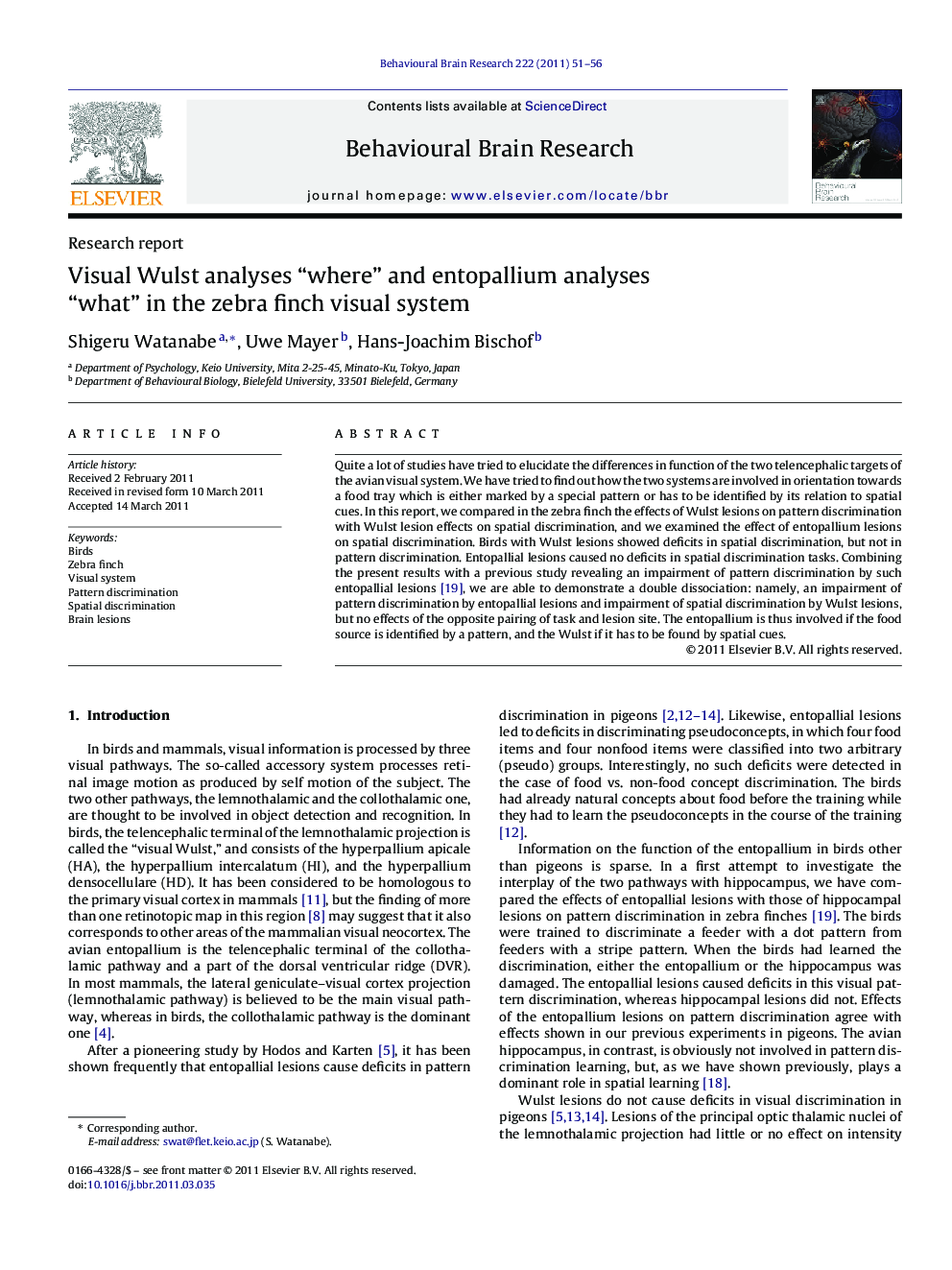| Article ID | Journal | Published Year | Pages | File Type |
|---|---|---|---|---|
| 6259660 | Behavioural Brain Research | 2011 | 6 Pages |
Quite a lot of studies have tried to elucidate the differences in function of the two telencephalic targets of the avian visual system. We have tried to find out how the two systems are involved in orientation towards a food tray which is either marked by a special pattern or has to be identified by its relation to spatial cues. In this report, we compared in the zebra finch the effects of Wulst lesions on pattern discrimination with Wulst lesion effects on spatial discrimination, and we examined the effect of entopallium lesions on spatial discrimination. Birds with Wulst lesions showed deficits in spatial discrimination, but not in pattern discrimination. Entopallial lesions caused no deficits in spatial discrimination tasks. Combining the present results with a previous study revealing an impairment of pattern discrimination by such entopallial lesions [19], we are able to demonstrate a double dissociation: namely, an impairment of pattern discrimination by entopallial lesions and impairment of spatial discrimination by Wulst lesions, but no effects of the opposite pairing of task and lesion site. The entopallium is thus involved if the food source is identified by a pattern, and the Wulst if it has to be found by spatial cues.
⺠Primate visual system has dorsal (process where) and ventral (process what) pathways in the telencephalon. ⺠Avian system corresponding to the two pathways has been unknown. ⺠Present results show thalamo-Wulst pathway processes “where” and collocio-thalamo-entopallium pathway processes “what”.
